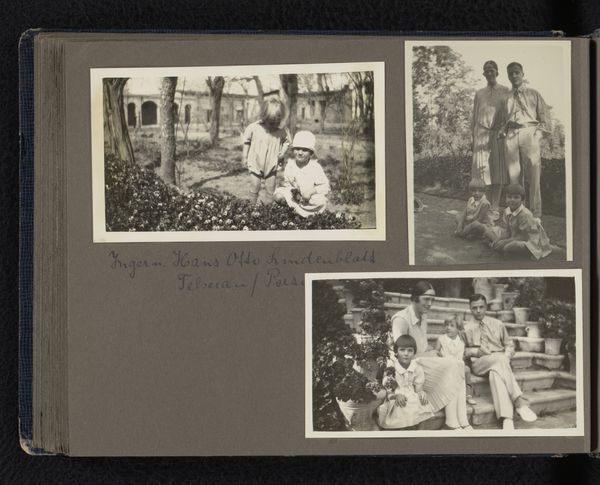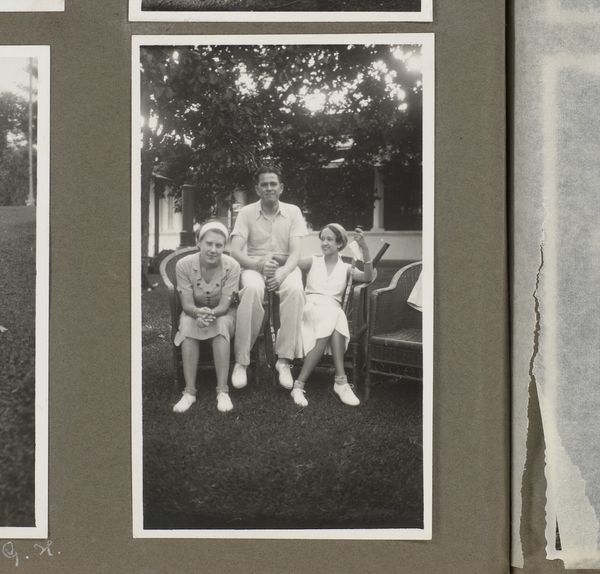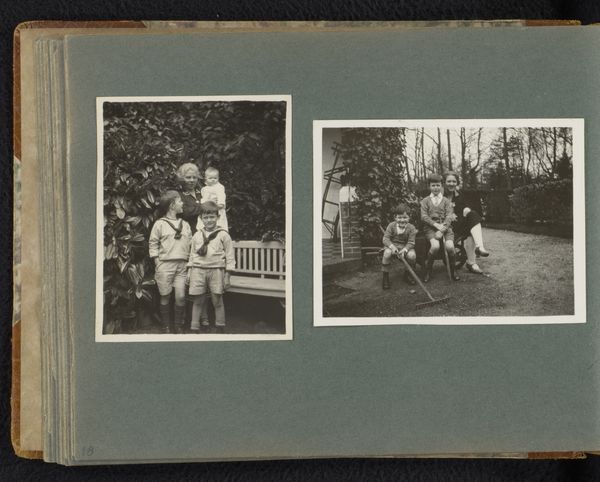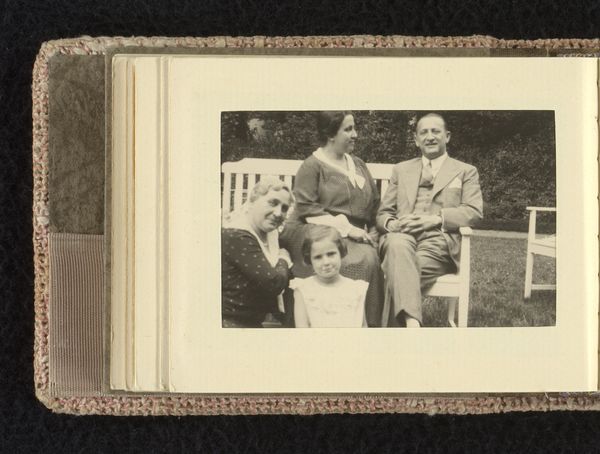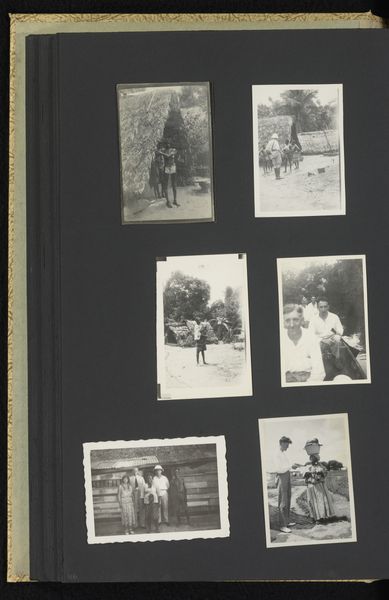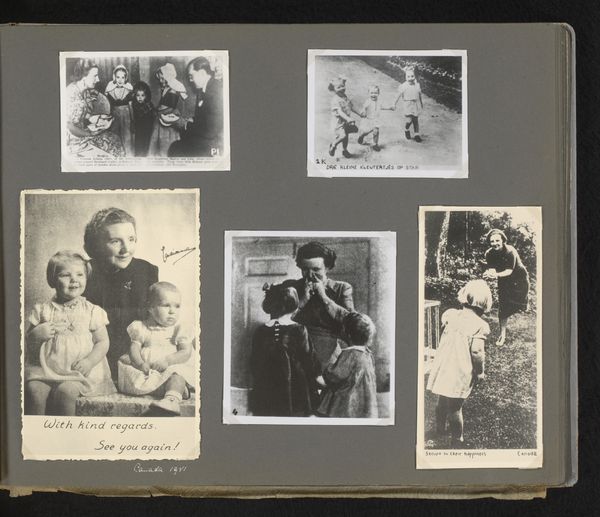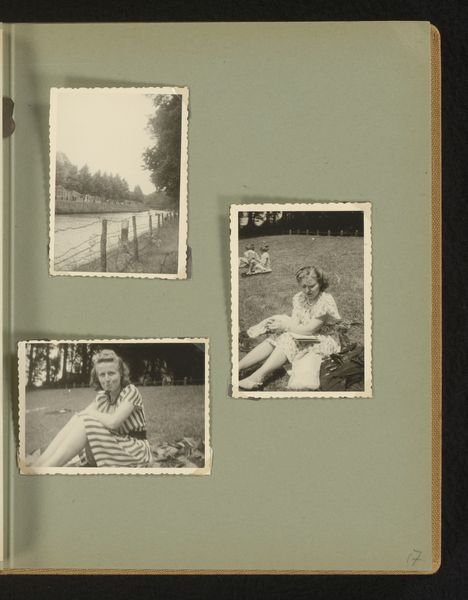
photography, gelatin-silver-print
#
portrait
#
garden
#
aged paper
#
toned paper
#
landscape
#
photography
#
forest
#
coloured pencil
#
group-portraits
#
gelatin-silver-print
#
genre-painting
Dimensions: height 182 mm, width 268 mm
Copyright: Rijks Museum: Open Domain
Curator: Here we have an intriguing page from a photograph album. The prints are gelatin-silver, dating roughly between 1920 and 1930, depicting a family in outdoor settings. It's catalogued as "Vier foto's van ouders en twee kinderen, op een tuinbank en in het bos," which translates to "Four photos of parents and two children, on a garden bench and in the forest." Editor: The overall visual impression is of a bygone era, a kind of solemn tenderness. The stark black and white, and the almost faded quality of the images evoke a powerful sense of memory and perhaps the fragility of time. Curator: I find it interesting to consider these photographs not just as family portraits, but as commodities. Each image involved the labour of the photographer, the processing of materials, and the economic means to participate in this form of leisure and self-representation. The clothing worn by the subjects would also suggest social status. Editor: From a formal perspective, the composition across the four photographs provides balance; two showing families in posed settings and two in more natural outdoor settings. I also notice how the light renders soft gradations of tone, emphasizing textures of clothing and foliage, leading your eye to certain figures. The high contrast reinforces emotional solemnity. Curator: Exactly. The choice of background, a controlled garden versus a 'wild' forest, speaks to the era's shifting relationship between domestic life and nature. Also, the uniformity of the prints suggests mass production techniques in photography becoming more widely available. What stories could these images tell about societal attitudes toward childhood? Editor: We can see how each photo has been carefully chosen and cropped; you might say it functions almost as a semiotic code. Note how these placement choices within this familial archive structure an emotional narrative. Curator: I concur. Considering these images, particularly in their material form as part of a photographic album, gives insight into the social function of art production. Editor: Yes. The formalism present highlights both intention and underlying structure which in turn enables further insights into a visual language of family and setting. Curator: Viewing these photos opens a discussion about materiality and production and evokes nostalgia for the past. Editor: Quite so; the inherent beauty here can make viewers consider those things, also providing insight into photographic style, especially composition.
Comments
No comments
Be the first to comment and join the conversation on the ultimate creative platform.
